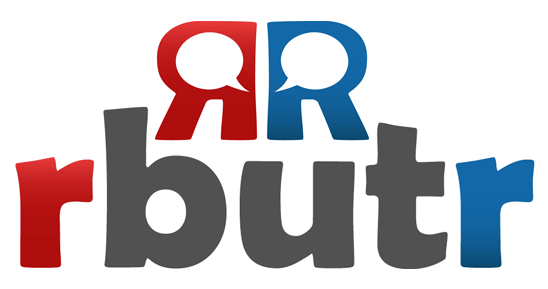In this week’s eSkeptic:
A new web browser plugin makes it easy to follow debates by linking arguments to counter arguments online.
HOW DO WE DISCERN FACT FROM FICTION on the Internet, separate eloquent arguments from clever trickery, or break out of our own filter bubbles and confirmation biases?
For people interested in finding the valid arguments in a sea of invalid ones, a new web browser plugin called rbutr (pronounced ri-buht-er) provides a surprisingly simple solution! rbutr allows people to connect one webpage which makes a claim to another webpage which rebuts that claim. In doing so, future visitors to the page making the original claim are notified that the claim has been rebutted and can easily click through to read the rebuttal.
rbutr provides a very simple method for people to help people improve their ability to critically analyse articles. By linking articles to rebuttals, rbutr puts you in a better position to make an informed assessment of the information you read online.
How Does it Work?
Rebuttals are added to rbutr by users like you, using a free web browser plugin. Once registered, anyone is free to connect any webpage to any other webpage at any time and indicate that one is a rebuttal of the other. The rebuttals in the system are then free to be voted on by other members so that articles containing weaker arguments will be pushed down or removed entirely, while quality rebuttals containing stronger arguments will be pushed up to the top where they will receive the most attention.
How Do I Get Started?
First, you must be using the Google Chrome web browser (the rbutr plugin for Firefox and Internet Explorer are coming soon). Next, register for a free rbutr account. This will log you in, and provide you with a link to install the rbutr browser plugin in Google Chrome. The rbutr plugin is the application that allows you to add rebuttals, and how you are notified of rebuttals when you visit a rebutted page. Once the plugin is installed, a simple in-browser tutorial will show you just how easy it is to contribute and participate.
For more information, visit rbutr.com or check out the rbutr blog.
About this week’s eSkeptic
In this week’s eSkeptic, Paul Goodin explains how he uses magic tricks and mentalism to introduce the theme of skepticism to students in his classroom and teach the importance of critical thinking in everything from pseudoscience to buying a car. This article appeared in Skeptic magazine 15.4 (2010).
Paul Goodin is a freelance writer and a lecturer of English at Northern Kentucky University. He teaches advanced writing and literature. He is also a mentalist and a member of the International Brotherhood of Magicians and the Society of American Magicians. He has served on the board on a local level for both clubs and is a member of the S.A.M.’s Occult Investigative Committee. His interests in skepticism include psychics, UFOs, cryptozoology, pseudoscience and pseudohistory. He spends his free time debunking those who believe in silly things.
A Magician in the Classroom
Using Magic and Mentalism to Teach Skepticism
by Paul Goodin
Anyone who teaches can relate to running into the occasional brick wall when trying to convey new ideas. To teach critical thinking and impart a skeptical outlook is difficult in and of itself. But when you are teaching where a majority of the students have strong religious convictions, it can be an even greater challenge.
Although I teach an advanced writing course, I believe critical thinking is as important to writing as grammatically sound work. If the sentences are well structured but the content is not intellectually sound, then it is still poor quality. With the plethora of self-proclaimed psychics and healers reaching greater numbers on the Internet, I found an unusual avenue to introduce the theme of skepticism— magic and mentalism.
I discovered my amateur magician’s skills were a valuable tool to use to introduce a topic that might otherwise be unpalatable to a group where a majority of them hold strong, unmoving religious convictions. This is when the mentalist (a.k.a. charlatan) in me comes out. I spin a tale of how, as a child, it was discovered I had a special “gift,” later tested at the Rhine Institute. I then demonstrate some of the tests performed to determine if I was psychic, or merely intuitive. I bend a spoon, key, or roofing nail, and follow that with a book test, an effect with Zener cards, and perhaps a cold reading. My method is similar to that discussed in Michael Dougherty’s 2004 article in Skeptic (“Educating Believers,” Vol. 10, No. 4, 31–35). He created a curriculum that “was primarily an exploration of different paranormal phenomena, with special focus on psychic predictions, alien visits and abductions, astrology, and numerology.” He also led students to believe he possessed paranormal abilities. But, unlike Dougherty, I do not allow several weeks to go by before I reveal the truth. Instead, I ask students to write a reaction paper and discuss if they think that I possess psychic powers and intuitive abilities, or if they think that it’s just a trick. Like Dougherty, I explore common logical fallacies. But my approach differs from his in that I expand my pedagogy beyond the limitations of paranormal phenomenon. I discuss with my students how critical thinking is necessary in everything from pseudoscience to buying a car.
Although student reactions vary from class to class, they are usually consistent on the whole. Approximately one third of the class think my “experiments” were tricks, a third believe I was psychic, and a third feel either I was not psychic but had good intuition, or they are not sure. Once I reveal the truth, their reactions are interesting.
A few are angry at being deceived while others realize the lesson learned (i.e., just because I am their instructor does not mean I can be trusted); they are also reminded that the theme of the course is skepticism. The ones who thought I did tricks, of course, feel vindicated. Some reaction papers reveal that the foundation of many of their beliefs are faith based. Bible quotes are not unusual. My most memorable paper came from a student who brought her Bible to class everyday. She began her first sentence with “I believe Mr. Goodin is an agent of the devil.” This surprised me because it usually takes my students at least five weeks to discover this.
When explaining my methods, I walk a fine line between debunking their beliefs and revealing magician’s secrets. My rule of thumb is that if James Randi or Skeptic magazine has discussed the methodology, then I do not consider my explanations as exposure. After explaining my methods, a few students have come up to me after class and said “I know you said it was a trick, but I know you’re really psychic. Don’t worry, I won’t tell anyone.” The few students who insist that what they see is real are the ones who have the greatest difficulty with the course material.
One of my concerns with teaching skepticism is similar to those discussed in Scott Calvin’s article in Skeptic (“Crazy Ideas 101,” Vol. 15, No. 1, 14–17). In Calvin’s class, he uses crazy ideas in physics as his theme. He has his students present a theory and then “simulate the dishonesty sometimes employed in presenting ideas like these, the presenters are allowed to fabricate data and misuse sources, if they so choose.” He then assigns other members of the class various tasks to investigate which are related to the theory. These range from verifying the legitimacy of the sources used to investigating logical consistency, to checking “credentials and conflicts of interest of the primary developers of the theory.” Though Calvin’s course is in Physics and mine is Advanced Writing, I too want students to practice true critical thinking as opposed to learning to discredit specific beliefs. It is one thing to reveal fraudulent practices of psychics, but it does little in the long run to help students apply skeptical thinking in real world situations. It is imperative to give students the tools to verify reliable sources as well as being able to explain why a theory is fallacious. Having students of differing majors (e.g., science, humanities) my assignments must be varied by necessity. This allows students to explore their own interests, which helps combat classroom apathy.
Writing about psychics is a good topic to start with since all students have strong opinions on the subject, and this helps them focus on research methods and basic grammatical structure. Often, those who believe in psychics use YouTube clips of Sylvia Browne, John Edward and James Van Praagh as evidence. The students who debunk psychics (about 85% of the class) refer to Randi.org and Penn & Teller’s Showtime series Bullshit. They complain that in their county libraries they have no problem finding books written by self-proclaimed psychics, but are hard pressed to find adequate sources disproving them. Some students make a distinction between psychics and faith healers, believing that the psychics are using tricks while the healer is working from divine guidance. When I press them on the lack of consistency, they cite Benny Hinn among others as proof. One year, I had a student who attended a Hinn appearance and was selected for healing; her ailment remained. Though Hinn had her back flipping across the stage, it was not revealed she was a former gymnast. She lost her faith in him.
The next assignment I give the students, however, proves to be a little more challenging. We discuss the subjectivity of history and look at two specific events: the Holocaust and the rape of Nanking. Since they are not familiar with these topics they are forced to apply their critical thinking skills more broadly. The idea of revisionist history is discussed by having the students read part four of Michael Shermer’s book, Why People Believe Weird Things. With Nanking, for example, we look at how two sides perceive the same event. One source used is Iris Chang’s 1998 book, The Rape of Nanking. It is an excellent example since Chang includes clippings from Japanese newspapers that present the horrific events there rather differently from how she herself documented them.
Once the students have practiced skeptical thinking for several weeks, I assign them exercises to gauge their comprehension through a number of 1–2 page reaction papers. For one assignment, since it is close by, I send them to the Creation Museum and ask them for: (a) their initial impression, and (b) if they think the museum truly addresses scientific subjects as accurately as it purports. Most of the class cite the museum’s contradictions of scientific facts. Some, however, say they are glad they went because it confirmed the validity of their religious convictions. While these students recognise that psychics are fakes, they still willingly believe the museum’s outlandish assertions—that dinosaurs boarded Noah’s ark, or the notion that T-Rex transformed from a herbivore into a carnivore at the instant of Adam’s fall from grace.
To give students an opportunity for peer critique, I assign a 10–15 minute presentation. They take one of the 25 fallacies of thinking presented in Shermer’s book, explain it to the class and show examples of how/when these occur in our lives. Their efforts are often creative and well done. One thing that keeps students on their toes is knowing that their fellow classmates will quiz them. With high caliber classes that are rather competitive, a sub-par presentation is a rare occurrence.
The final project gives students a chance to choose a belief they find unsupportable and to personally investigate “Why People Believe Weird Things.” The topics range from Bigfoot and alien abduction to countless claims investigated in the Penn & Teller series. The results are almost always papers in which the student has taken that extra step to think critically, and in some cases to reexamine the belief system in which they were raised.
I often end the semester with a quote from Carl Sagan: “If we are not able to ask skeptical questions, to interrogate those who tell us that something is true, to be skeptical of those in authority, then we’re up for grabs.” I then ask my students how Sagan’s statement applies to the research they have done. Moreover, I ask what have they learned from the entire process of critical thinking. Besides improving their research abilities, I inquire about how skeptical thinking has changed their thought processes.
Each year, I see a dramatic increase in students who come into the class with critical thinking skills. Perhaps it is due to watching programs such as Penn & Teller’s and reading sources such as Skeptic that give them the tools they need. On the other hand, it could just be that the students who believe in psychics and the like are merely avoiding taking my class. ![]()
Skepticism 101: The Skeptical Studies Curriculum Resource Center
We thought we’d take this opportunity to remind you about our recently launched initiative to provide educators, teachers, administrators, students, and skeptics in all fields and walks of life with the resources you need to teach people (and yourselves) how to think skeptically and critically about any and all claims.
Every time we talk to someone anywhere about anything, we have an opportunity to teach (and learn about) skepticism and critical thinking (both of which are at the core of science). Learning how to think about ideas is at the foundation of change (especially of beliefs). To that end, we have launched Skepticism 101 and invite you to check it out, contribute to the resource center and freely use the materials available to you.
Skeptical perspectives on baloney detection, skeptical investigation, and the secrets of mental math…
-
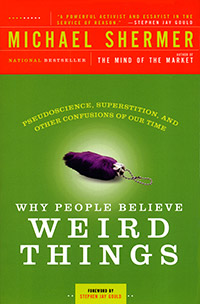 Why People Believe Weird Things
Why People Believe Weird Things
by Michael Shermer -
A no-holds-barred assault on popular superstitions and prejudices, this book debunks nonsensical claims and explores the very human reasons people find otherworldly phenomena, conspiracy theories, and cults so appealing. Michael Shermer takes on science luminaries and others who hide their spiritual beliefs behind the trappings of science.…
-
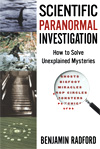 Scientific Paranormal Investigation:
Scientific Paranormal Investigation:
How to Solve Unexplained Mysteries
by Benjamin Radford -
An excellent primer on how any reasonably observant person interested in looking into paranormal claims can do so without having to invent the art from scratch. The real paydirt here is Ben’s own detailed accounts of events he’s personally looked into… Ben Radford knows his calling. Read, consider, and learn. It’s all here. —James Randi
-
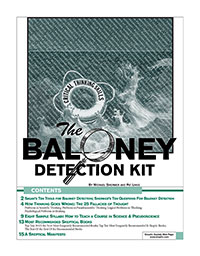 The Baloney Detection Kit
The Baloney Detection Kit
by Michael Shermer and Pat Linse -
This 16-page booklet is designed to hone your critical thinking skills. It includes suggestions on what questions to ask, what traps to avoid, specific examples of how the scientific method is used to test pseudoscience and paranormal claims, and a how-to guide for developing a class in critical thinking…
-
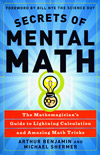 Secrets of Mental Math
Secrets of Mental Math
by Arthur Benjamin and Michael Shermer -
The Mathemagician’s Guide to Lightning Calculation and Amazing Math Tricks will have you thinking like a math genius and amazing those around you in no time! Get ready to amaze your friends — and yourself — with incredible calculations you never thought you could master, as renowned “mathemagician” Arthur Benjamin shares his techniques for lightning-quick calculations and amazing number tricks. This book will teach you to do math in your head faster than you ever thought possible, dramatically improve your memory for numbers, and — maybe for the first time — make mathematics fun!


